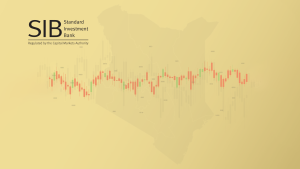Highlights
Renewed tariff jitters, an uncertain trade policy path and weak economic data drove U.S. equities lower for the week, with some indices seeing their worst week since the tariff-driven sell-off in early April. The week began on a positive note, with the U.S. and the EU reaching a framework deal on trade. The agreement includes a 15% tariff on most European exports to the U.S., half the rate initially mooted. The U.S. will keep a 50% tariff on steel and aluminium for the time being. However, on Thursday, President Trump signed an executive order to raise tariffs on the vast majority of U.S. trading partners, effective August 7. Further, the Federal Reserve as was widely expected, maintained its target policy rate at a range of 4.25% to 4.50%. The Fed Chair’s remarks pointing to the central bank’s willingness to wait for data to determine monetary policy decisions, shifted market sentiment and sent expectations for a September rate cut lower. Notably, two Fed governors dissented, preferring to immediately lower rates by a quarter point, and the central bank’s post-meeting statement noted that “economic activity moderated in the first half of the year,” which some market participants viewed as dovish developments. July jobs data came in well below analysts’ expectations and further downward revisions of the May and June readings by a total of 258,000 indicated that the labour market has cooled much more significantly than many had thought in recent months. Across the Atlantic, resilient eurozone data for GDP, inflation, and economic sentiment appeared to reduce pressure on the European Central Bank to lower interest rates again. Headline inflation held steady at 2.0% in July while the jobless rate in the euro area remained at a record low of 6.2% in June, unchanged from May’s figure. In China, the S&P Global manufacturing purchasing managers’ index (PMI) for China fell to 49.5 in July, below the 50 level that indicates a contraction, versus June’s 50.4 reading. This data suggests that China’s economy could see slower growth in the coming months amid still-weak domestic demand and global trade uncertainty. Front-loading by Chinese exporters ahead of expected U.S. tariff hikes, shipments to non-U.S. markets, and fiscal stimulus at home kept China’s economy buoyant in the year’s first half. But many economists expect that the momentum in the economy will slow as the impact of these tailwinds diminishes.
Data Highlights
The year-on-year Inflation Rate reading in Australia came in at 2.1%, slightly below the 2.2% expected by analysts and lower than the previous reading of 2.4%. Eurozone GDP grew by 1.4%, higher than the forecast of 1.2%. The U.S. GDP grew by 3% from the previous quarter. The Bank of Canada, the Bank of Japan and the Federal Reserve all kept their policy rates unchanged, in line with market expectations. Retail Sales in Switzerland grew by a remarkable 3.8%, far outpacing the 0.2% pencilled in by analysts. Unemployment In the Euro Area held steady at 6.2% slightly lower than the anticipated 6.3%. Personal Consumption in the U.S. was also steady, growing by 2.6 from the previous year, above the expected 2.5% growth. Inflation in Europe held on to the 2% mark. The U.S. non-farm payrolls data came in at 73K, lower than the expected 110K jobs, while the unemployment rate ticked higher than the previous reading, coming in at 4.2%, in-line with forecasts.
Week Ahead
Swiss Inflation Rate – Monday | New Zealand Unemployment Rate, Eurozone Retail Sales – Wednesday | China’s Balance of Trade, Swiss Unemployment Rate, BoE Interest Rate Decision – Thursday | Canadian Unemployment Rate – Friday





